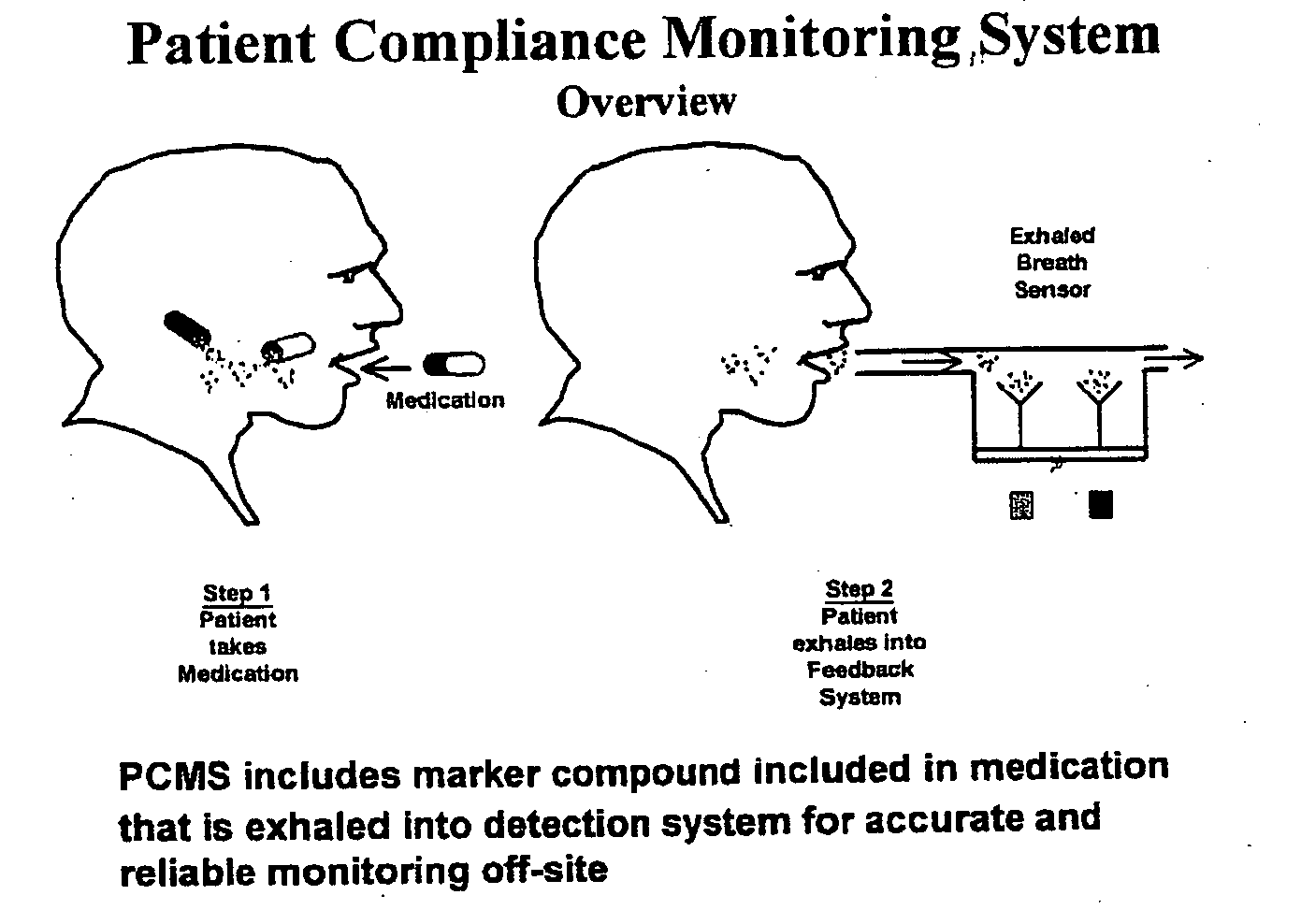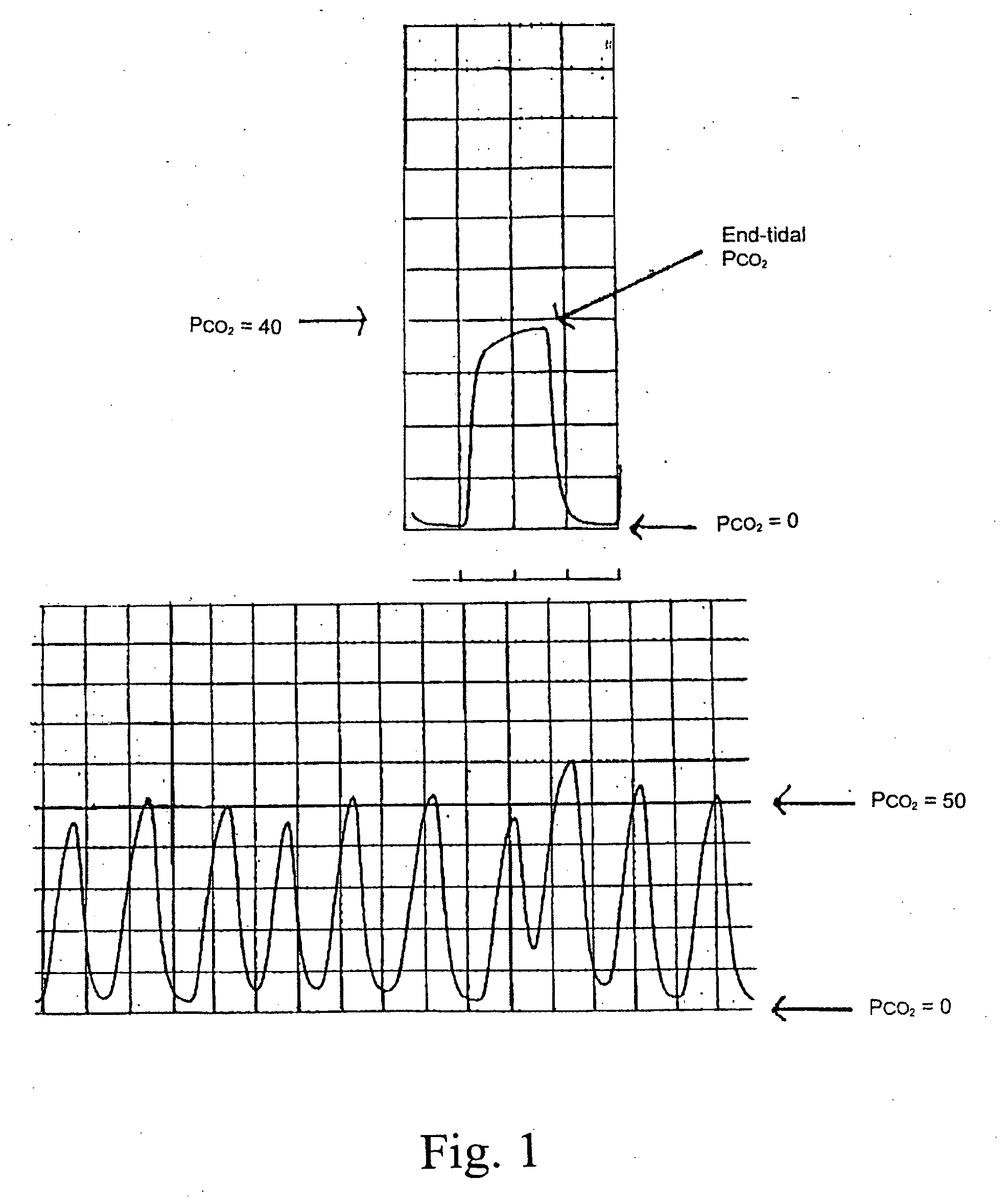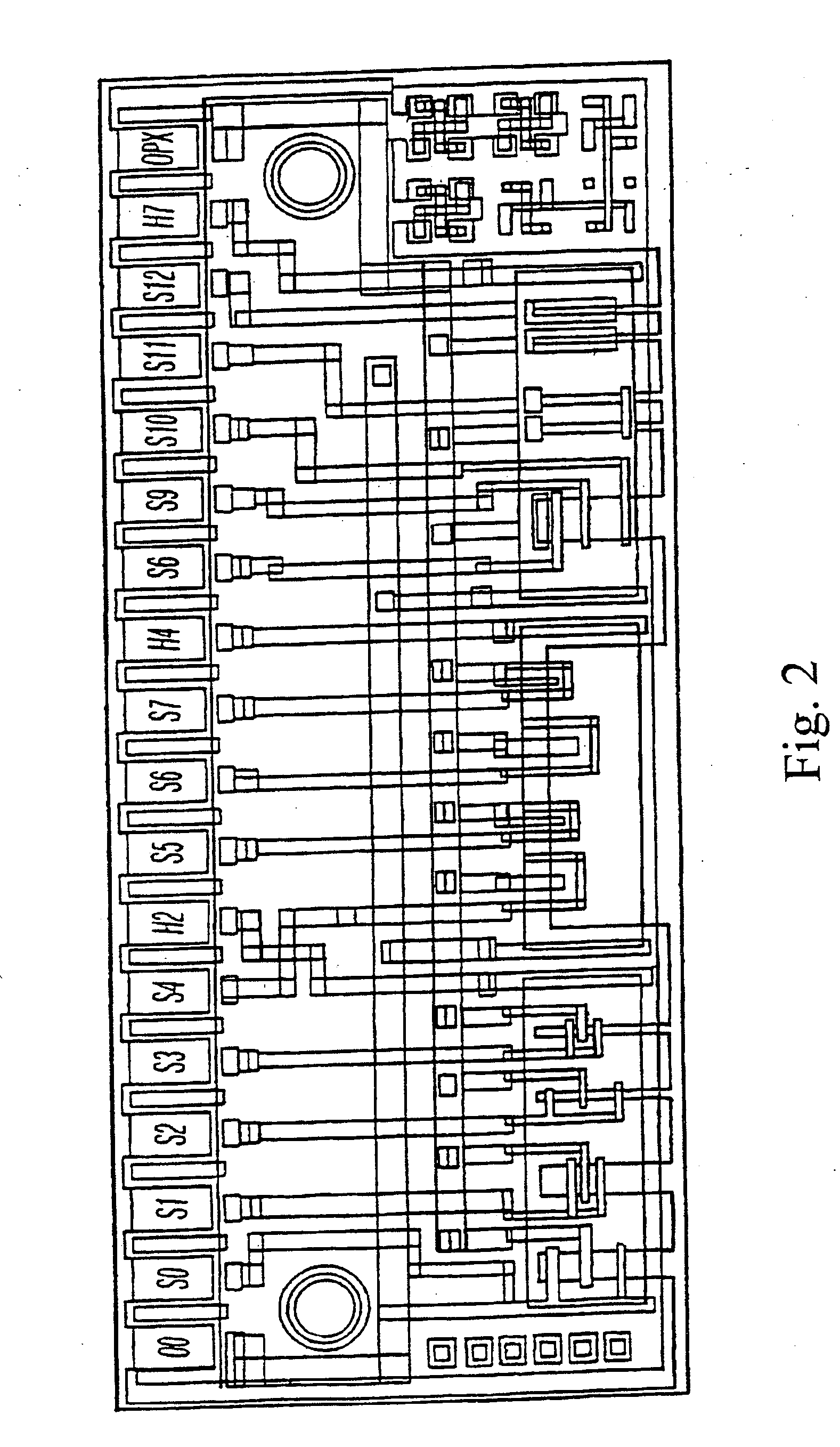Marker detection method and apparatus to monitor drug compliance
a technology of patient compliance and detection method, applied in the field of patient compliance monitoring, can solve the problems of drug wastage, high complication rate, and high healthcare cost, and achieve the effects of accurate evaluation of pharmacodynamics and pharmacokinetics, non-invasive monitoring of patient compliance, and cost-effective and frequent monitoring
- Summary
- Abstract
- Description
- Claims
- Application Information
AI Technical Summary
Benefits of technology
Problems solved by technology
Method used
Image
Examples
example 1
Metabolite of Verapamil as a Therapeutic Drug Marker
[0123] Verapamil is a widely prescribed calcium channel antagonist used mainly to treat essential hypertension or cardiac arrhythmias. The metabolism of verapamil is via the cytochrome P450 3A4 system that metabolizes many drugs by oxidative N-dealkylation. It is commonly observed that the alkyl group lost from an amine during N-dealkylation (and from an ether during O-dealkylation) appears as an aldehyde or ketone arising from the dissociation of a carbinolamine intermediate (Brodie et al., “Enzymatic metabolism of drugs and other foreign compounds,”Annu Rev. Biochem, 27:427-454 (1958); Rose and Castagnoli, “The metabolism of tertiary-amines,”Med Res Rev., 3(1):73-88 (1983)).
[0124] In this particular example of the present technology, verapamil is modified so that instead of the native formaldehyde being liberated due to metabolism, a non-endogenous volatile molecule is produced in a 1:1 molar ratio to the parent substrate (see ...
example 1a
Synthesis of a Verapamil Analogue that Produces a Detectable Metabolite after Administration to a Patient
[0126] N-Nor-(+)-verapamil hydrochloride (477 mg, 1 mmol) is suspended in 10 mL methanol, and sodium hydroxide (40 mg, 1 mmol) is added. The precipitate is filtered off; then, the solvent is evaporated in vacuo. The residue is dissolved in acetonitrile (10 mL), polystyrene-bound 1,5,7-triazabicyclo[4,4,0]dec-5-ene (2 g) and 3-bromo-1,1,1-trifluoropropane (195 mg, 1.1 mmol) are added to the solution. The mixture is stirred at room temperature for 16 h. Scavenger resin (methylisocyanate bound to macroporous polystyrene resin, 2 g) is then added and the reaction mixture is agitated for a further 16 h. The solid is filtered off, washed with acetonitrile (2×5 mL), the filtrate is evaporated to dryness in vacuo, and the residue is purified by silica gel column chromatography. The purified product is then treated with diethyl ether containing 2M hydrochloric acid to obtain it in a salt...
example 2
Metabolite of Dextromethorphan as a Therapeutic Marker
[0127] Dextromethorphan (3 Methoxy-17-methylmorphinan hydrobromide monohydrate; MW 370.3) is the d isomer of levophenol, a codeine analogue and opioid analgesic. The main clinical use of this agent is as an antitussive.
[0128] There is a clear first pass metabolism of dextromethorphan. It is generally assumed that the therapeutic activity of dextromethorphan is primarily due to its active metabolite, dextrophan (Silvasti et al., “Pharmacokinetics of dextromethorphan and dextrorphan: a single dose comparison of three preparations in human volunteers, Int J Clin Pharmacol Ther Toxicol, 9:493-497 (1987); Baselt & Cravey, Disposition of Toxic Drugs and Chemicals in Man, 3rd ed. Yearbook Medical Publishers, Inc., Chicago (1982)). It is metabolized in the liver by extensive metabolizers to dextrorphan. Dextrorphan is itself an active antitussive compound (Baselt & Cravey, 1982). Only small amounts are formed in poor metabolizers (Kupf...
PUM
 Login to View More
Login to View More Abstract
Description
Claims
Application Information
 Login to View More
Login to View More - R&D
- Intellectual Property
- Life Sciences
- Materials
- Tech Scout
- Unparalleled Data Quality
- Higher Quality Content
- 60% Fewer Hallucinations
Browse by: Latest US Patents, China's latest patents, Technical Efficacy Thesaurus, Application Domain, Technology Topic, Popular Technical Reports.
© 2025 PatSnap. All rights reserved.Legal|Privacy policy|Modern Slavery Act Transparency Statement|Sitemap|About US| Contact US: help@patsnap.com



